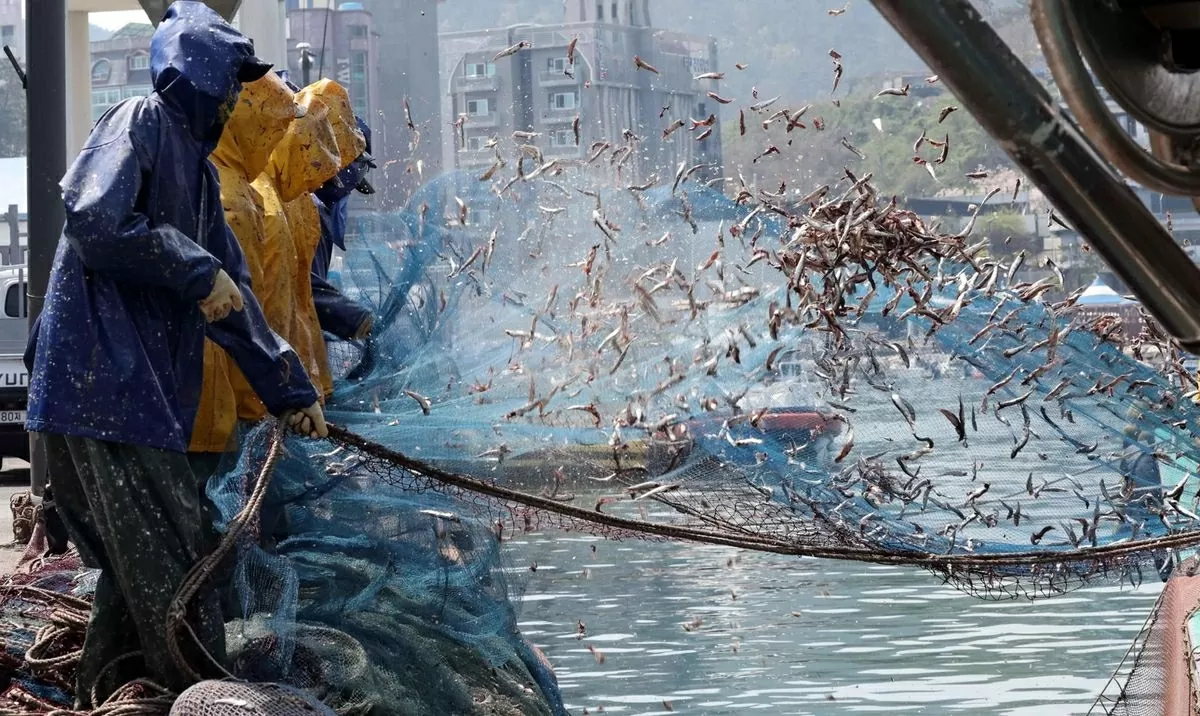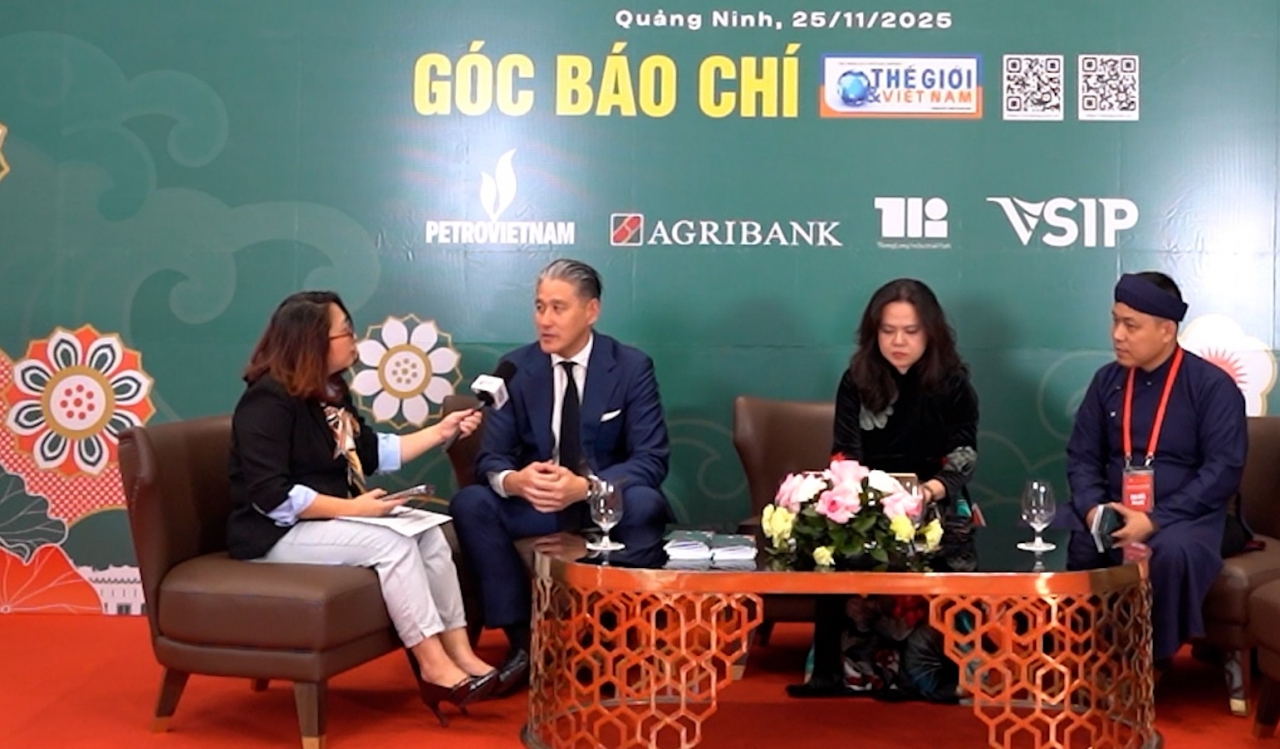
Unprecedented marine heat waves fuel fishery disaster in Korea
Latest
 |
| UFishermen shake freshly caught anchovies from nets at a port in Busan, April 7. (Source: Newsis) |
Korea’s coastal fisheries are on high alert as an early and intense heat wave has rapidly raised sea temperatures, triggering mass fish deaths and prompting government intervention.
The Ministry of Oceans and Fisheries and the National Institute of Fisheries Science issued high sea temperature advisories for 23 regions including Jeju, the West Sea and the southern coast, effective 6 p.m. Thursday.
The sea temperature warning level was elevated from level 1 “attention” to level 2 “caution” in a five-tier system, after average water temperatures in key areas soared by 2 to 4 degrees Celsius in just five days.
For example, Jeju’s Jungmun saw the daily average sea temperature jump from 22.1 degrees on June 28 to 25.6 degrees on Thursday. Similar spikes were recorded in Seosan, South Chungcheong Province, and Yeosu, South Jeolla Province.
The ministry has warned that this year’s high-temperature trend is developing faster and more intensely than last year, with advisories issued more than a week earlier than in 2024.
Sea surface temperatures in Korea’s coastal waters are projected to be 1 degree Celsius higher than the 30-year average this summer, driven by the North Pacific high-pressure system, intensified by climate change. Prolonged heat waves will further elevate water temperatures through mid-July and beyond.
While rising sea temperatures are a global phenomenon, the rate of increase in Korean waters is more than double the global average. Over the past 57 years, Korea’s sea temperatures have risen by 1.58 degrees Celsius, more than twice the global average increase of 0.74 degrees, according to the National Institute of Fisheries Science.
Korea’s coastal fish catch has sharply declined from 1.51 million tons in the 1980s to 910,000 tons in the past four years.
Last year, South Jeolla Province was among the hardest hit regions, with 990 fish farms across 10 cities and counties reporting mass deaths of 25.82 million fish and shellfish, resulting in losses of 57.4 billion won.
In Jeju, damage to farmed fish and other marine organisms due to high water temperatures soared from 170 million won in 2020 to 5.34 billion won in 2024 — a staggering 31-fold increase in just five years. On the southern coast of South Gyeongsang Province, mass fish deaths reached record highs in 2024, with 17.19 million fish lost and damages totaling 29.1 billion won as of last August.
Nationally, aquaculture industry losses from last year’s heat wave reached 143 billion won, the highest since record-keeping began in 2012.
Experts warn that Korea’s seas will continue to warm, with projections of a 1 to 4 degree increase by 2100. If current climate trends continue, annual fisheries losses in Korea could reach 4.5 trillion won with over 30,000 jobs at risk by 2030 or sooner.
To minimize damage, the government has activated emergency response teams and distributed oxygen supply equipment. Plans designate 2030 as a key policy target year for stabilizing seafood production and income. The government is also providing real-time water temperature data to local authorities and fish farmers. Multilingual guidelines have also been issued to support the sector’s large foreign workforce.




















